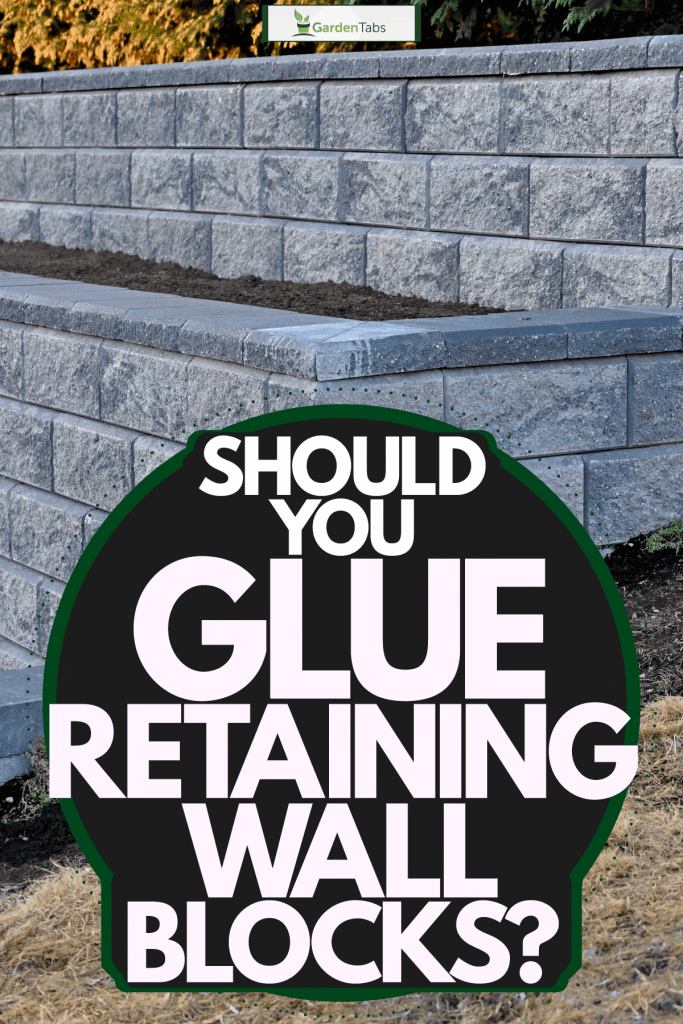Are you preparing to build your first retaining wall? If so, you have probably gotten mixed answers on whether or not you need adhesive between the blocks. Look no further because we have done the research and outlined our findings below.
Depending on the type of blocks you are using for your retaining wall, you may or may not need glue between the layers. If you are building your wall with interlocking blocks, there is no need for glue. If you use cinder blocks, you will not need glue if you fill the holes with cement. However, most other methods will benefit from the use of masonry adhesive.
Don't stop reading just yet. Stay with us to learn which types of glue are the best for retaining walls, if you can use Gorilla Glue on cinder blocks, how to secure a retaining wall cap, and much more.
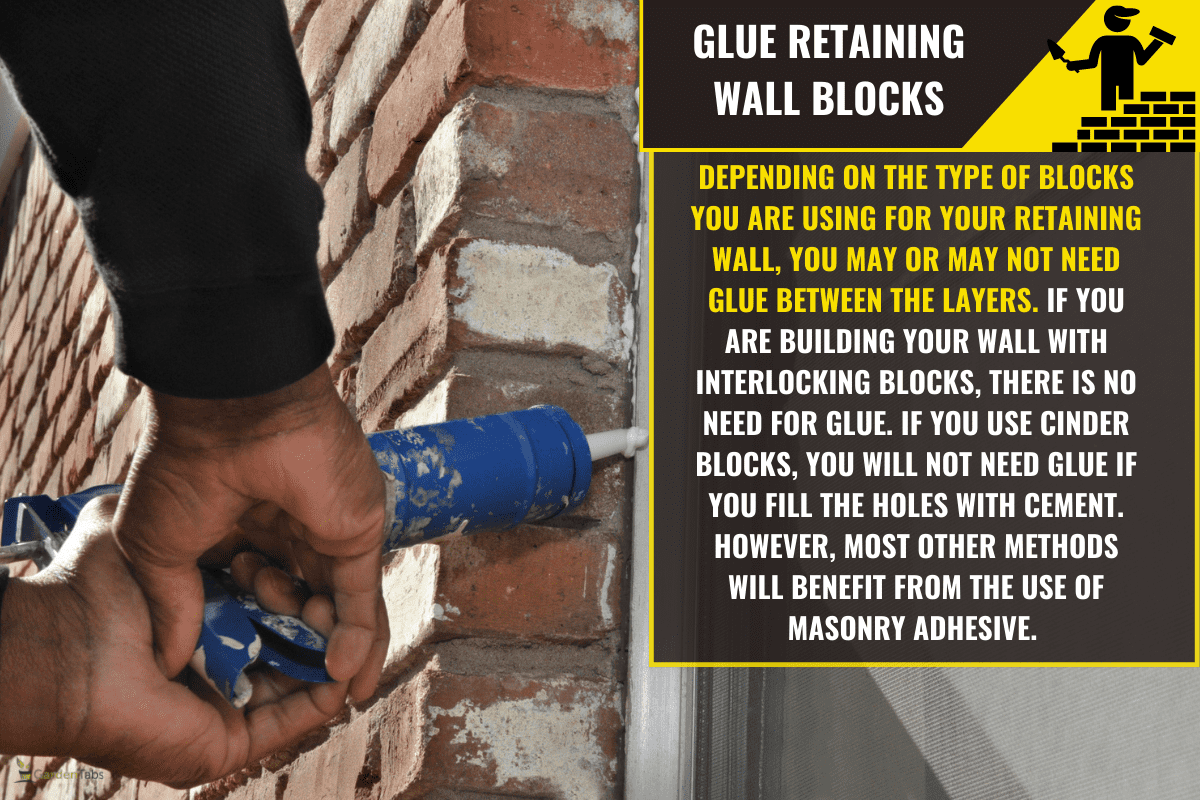
Should You Glue Retaining Wall Blocks?
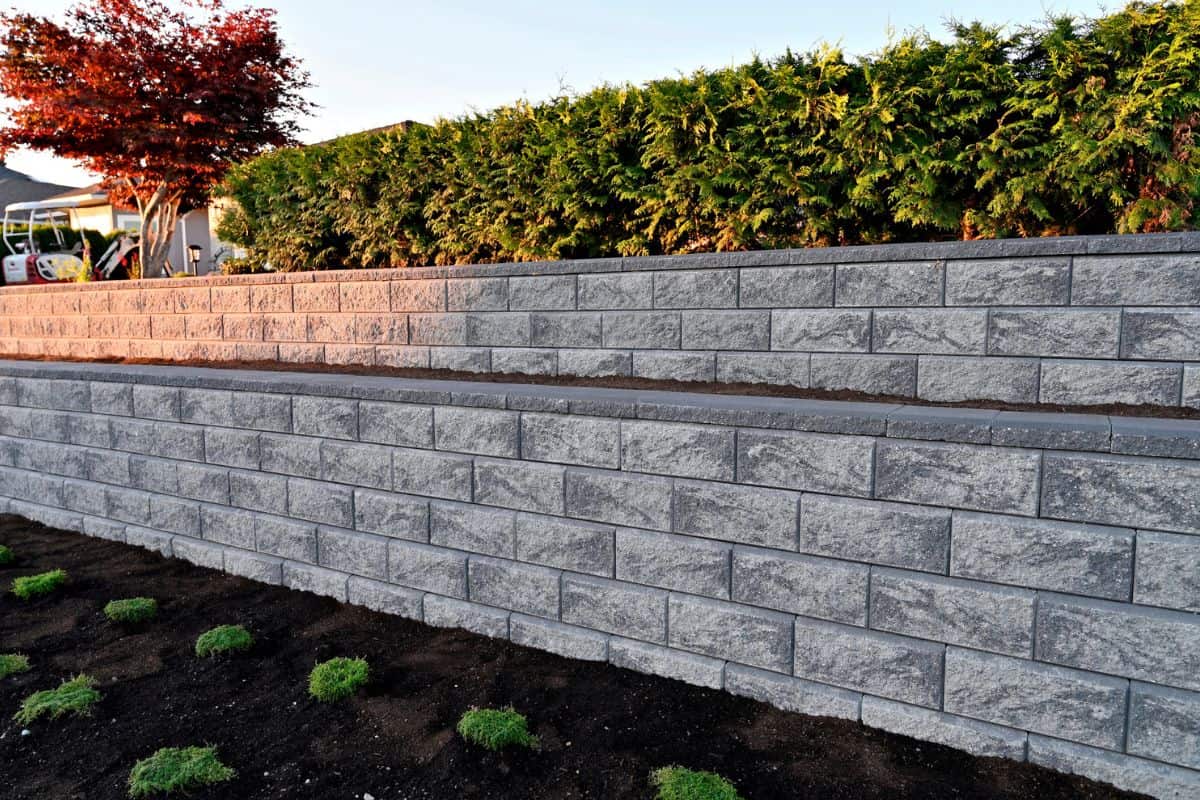
While glue is not always necessary when building retaining walls, in most cases, it will help keep your wall standing for longer. There is a slew of blocks that can be used in building retaining walls. Some interlock, eliminating the need for masonry adhesives.
If you would like more information on these interlocking blocks, check out Versa-Lok. Not only do they have a variety of stones, but they also have interlocking caps. The Versa-Lok system makes the process easy, and you can create a wall up to 50 feet high.
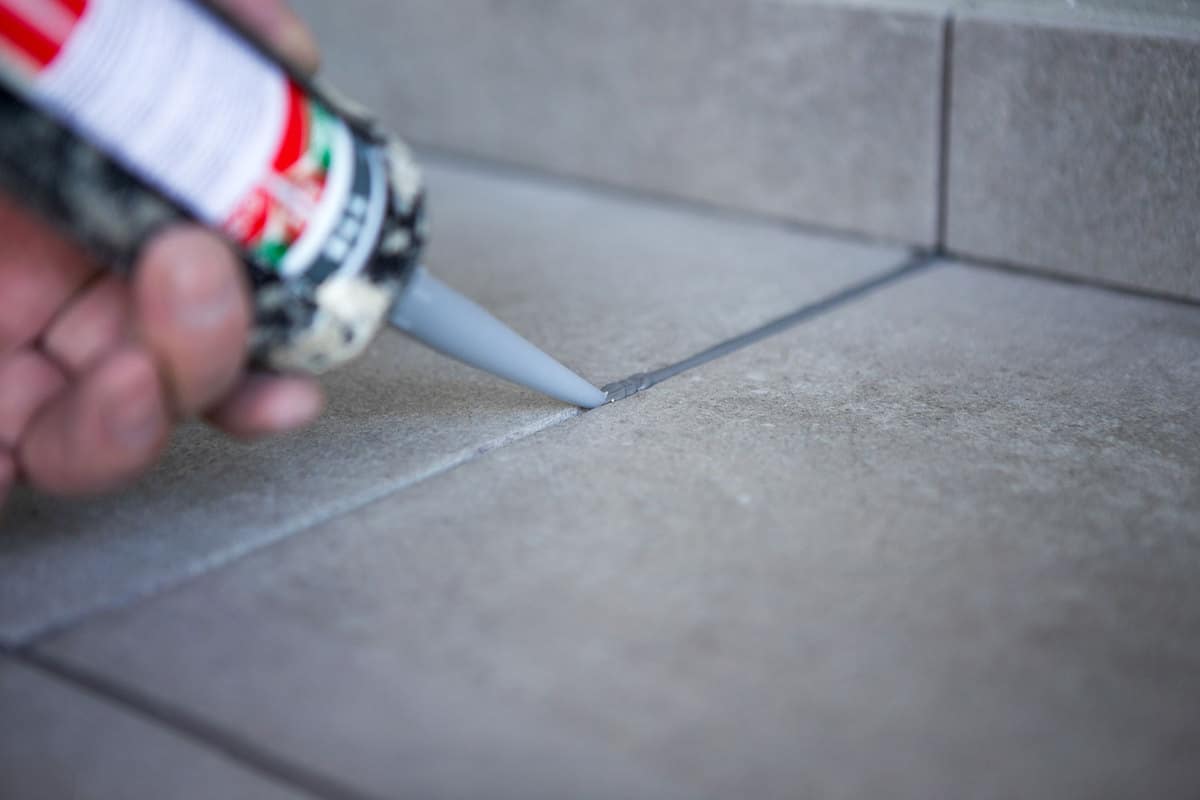
Traditional retaining wall blocks are not as easy to install as Versa-Lok; however, they are much cheaper. You can find a variety of traditional stones at Lowe's.
Pros and Cons of Using Glue on Retaining Walls
Using glue on retaining walls has many advantages. First, glue is easier to use than mortar because you don't have to mix it. Compared to mortar, construction adhesive dries much quicker, taking only a few hours instead of several days.
Glue is also less messy and easier to clean up. If you decide to skip glue and mortar altogether, you risk your wall being unstable and sliding from its place.
On the downside, you should not use construction adhesives on sagging walls. These are walls that are not entirely vertical. When the glue is applied, it will drain down the side of the blocks. Additionally, construction adhesives likely won't be the best choice if you plan to build a retaining wall more than three feet tall. You should consult the manufacturer's instructions for more detail.
What is the Best Adhesive for Retaining Wall Blocks?
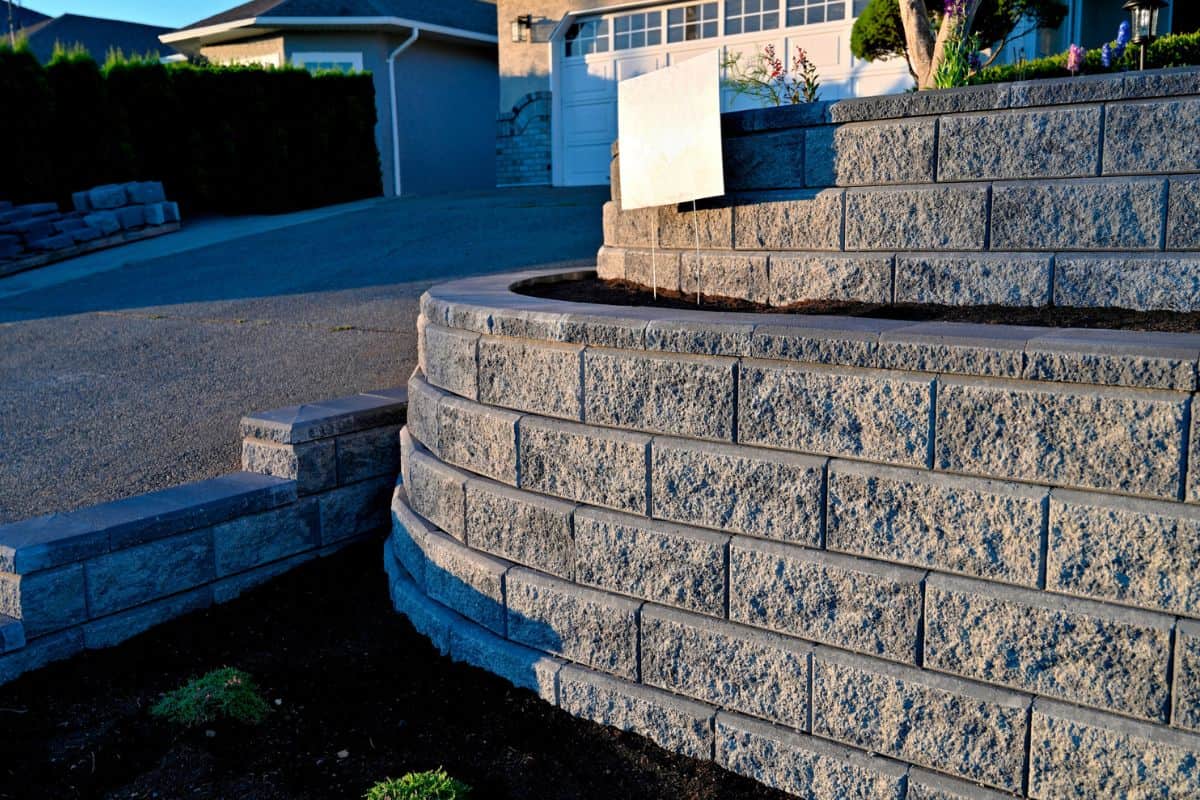
When it comes to adhesives, not all live up to their claims. That's why we did our research and found the strongest glues on the market. Although Liquid Nails is a well-known brand, it did not hold up to testing. It had the lowest strength of all the adhesives that were tested.
The number one glue on the market turned out to be Loctite Premium. Gorilla Glue came in at a close second. While JB Weld isn't necessarily made for construction purposes, it actually held up better than everything else. It did not fail when put under pressure. Instead, the material to which it was adhered broke. For this reason, we are adding it to the list.
Masonry adhesives are easier to apply when used with caulking guns.
You can find caulking guns on Amazon.
1. Loctite Premium Construction Adhesive
Loctite Premium is suitable for indoor and outdoor use, and it is repositionable, allowing for mistakes. Manufacturers claim it is eight times stronger than other brands, and they are telling the truth. It provides a strong initial hold, and you can paint over the finished product.
You can view Loctite Premium Construction Adhesive on Amazon.
2. Loctite PL 500 Landscape Block and Paver VOC Construction Adhesive
If you want a more specific product to your needs, Loctite also makes a landscaping adhesive that is meant for blocks and pavers. You get the same great bonding abilities that you would expect from Loctite products, but you can use it on either wet or dry surfaces.
It is made for outdoor use only and is suitable for temperatures from 0°F to 100°F. You can even apply it to frozen surfaces.
Check out Loctite Landscaping Adhesive on Amazon.
3. Gorilla Glue Max Strength Construction Adhesive
Gorilla Glue Max Strength Construction Adhesive provides the strongest bond of all the Gorilla Glue products. The non-foaming formula dries clear and is waterproof. You can even use it for underwater applications. It works in all weather conditions for both indoor and outdoor uses.
You can view Gorilla Construction Adhesive on Amazon.
4. 3M Marine 5200
If you're not in a hurry, 3M Marine 5200 is an excellent adhesive. Although it will begin drying in 12 hours, it can take up to 5 days to fully cure.
It can be applied in a range of temperatures from 40 degrees Fahrenheit up to 190 degrees. Just be aware that the dried product will be black, so you should be careful not to make a mess.
Check out 3m Marine 5200 Construction Adhesive on Amazon.
5. Red Devil Construction Adhesive
Red Devil Construction Adhesive is environmentally friendly and easy to clean up with soap and water. You can use it for both indoor and outdoor projects, and it is freeze/thaw stable, meaning it is resistant to excessive temperature fluctuations.
You can find Red Devil Construction Adhesive on Amazon.
6. F-26 High Strength Gel Heavy Duty Adhesive
F-26 offers a strong bond that is durable and waterproof. Use in both indoor and outdoor settings. It has an open time of 15 - 40 seconds and cures within 24 hours. However, it will continue to get stronger as it ages, especially during the first week of application.
F-26 is not affected by humidity and can be applied to wet or frozen surfaces, and it is suitable for application in temperatures ranging from 0⁰F - 120⁰F.
Check out F-26 High Strength Gel Adhesive on Amazon.
7. JB Weld
JB Weld Steel Reinforced Epoxy dries in 4 - 6 hours and is fully cured within as little as 15 hours. You'll get a bond so strong that your blocks will break before the epoxy. When fully cured, it can withstand temperatures as high as 550 degrees Fahrenheit.
You can view JB Weld on Amazon.
You can watch the experiments on YouTube:
How Do You Glue Retaining Wall Stones?

When gluing a retaining wall, it is essential to note that the first row of stones will not require an adhesive. Instead, you will press those snugly into the bottom layer of gravel, sand, or other material you use as a base.
Starting with the second row of bricks, stones, or blocks, you will apply a thin layer of glue over each block individually. Do not slide the top block across the bottom stone. Instead, place it directly on top of the bottom block, pressing firmly.
Will Gorilla Glue Work on Cinder Blocks?
Gorilla Glue will work on cinder blocks; however, you should not use the original formula. Instead, try Gorilla Glue Construction Adhesive. Even more, you can use Gorilla Construction Adhesive to build your retaining wall. With Gorilla Max Strength Construction Adhesive, you will get the strongest bond in the Gorilla family of products, and it dries clear for an appealing finish.

Additionally, Gorilla Construction Adhesive is waterproof and maintains a strong bond underwater and in all weather conditions. The repositionable qualities make it easy to fix mistakes with an extended open time of 30 minutes and a cure time of 24 hours. However, don't forget to purchase a caulking gun for easy application.
Check out Gorilla Max Strength Construction Adhesive on Amazon.
How Do You Secure a Retaining Wall Cap?
Before capping your retaining wall, make sure it is level. If your stones/blocks are uneven, you will need to cut them all to the same size, leaving approximately three inches for overhang. Once your cap fits nicely, apply a thin layer of adhesive, pressing the cap firmly to the wall. Do this all the way across.
If you use cinder blocks, you can apply an even layer of mortar to the top of the block after filling it with cement instead of capping it. However, you can purchase caps if you would like to have an overhang instead.
For caps that are uniform and affordable, check out Lowe's for a selection of retaining wall caps.
Watch this video for a step-by-step guide to capping your retaining wall:
You will need a circular saw with a masonry blade. If you do not have one, you can usually rent them or purchase your own.
You can also find masonry blades on Amazon.
How Much Should a Retaining Wall Cap Overhang?
The amount of overhang your wall has is a matter of personal preference. Most people prefer a one to three-inch overhang. Some individuals, on the other hand, do not like an overhang at all. It is entirely up to you.
Summary
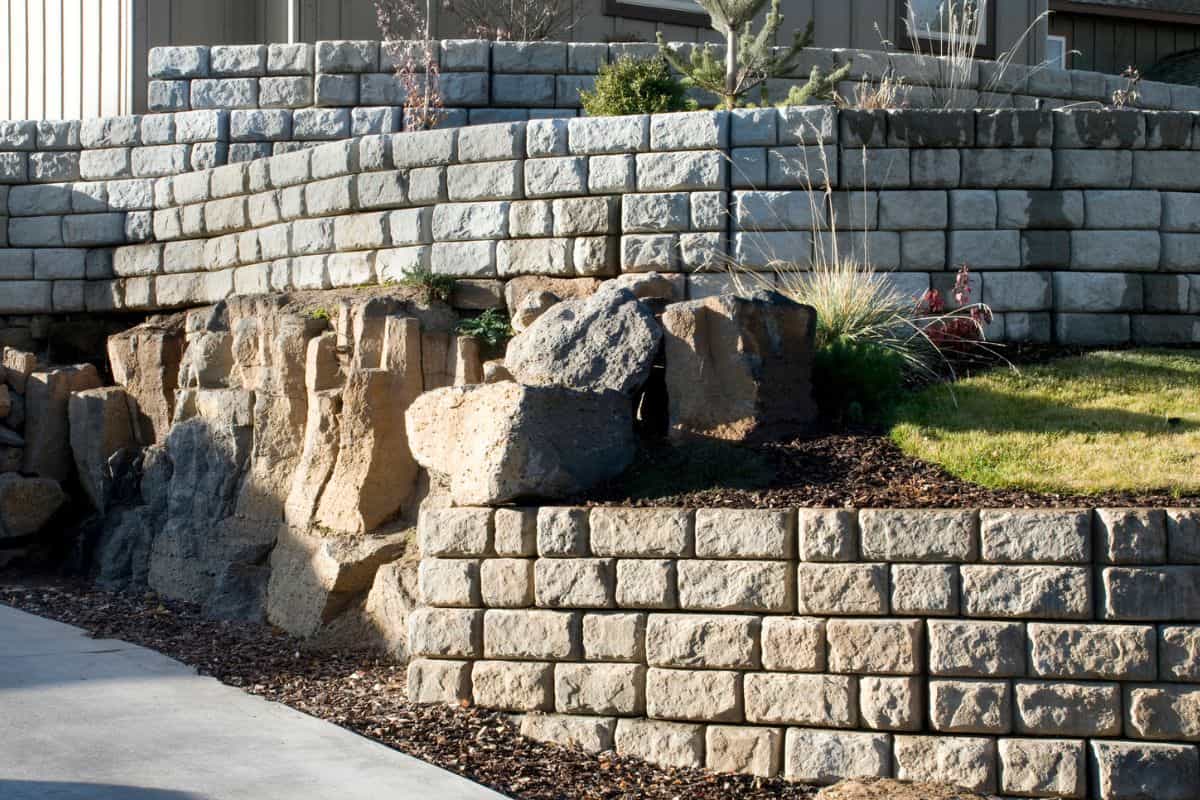
If you are considering building your own retaining wall, securing it with masonry adhesive is a good idea. The pros greatly outweigh the cons, and your wall will last longer.
For more helpful tips about retaining walls, check out these other posts on our blog:
Should You Build a Retaining Wall on Concrete?
How Much Do Retaining Wall Blocks Weigh?
